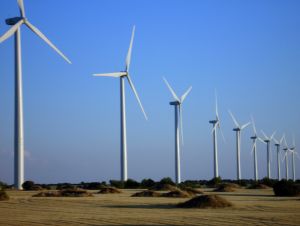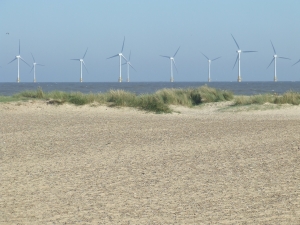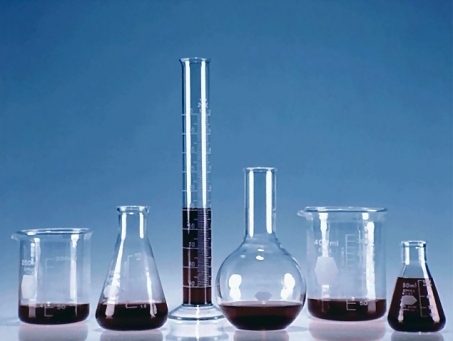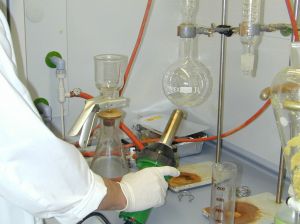Hello all,
Welcome to another post……
Fingers crossed

We are midway through the second quarter of 2016.The global economy continues to send mixed signals that basically stem from the rise and fall of crude oil price resembling more of a W-curve. The one thing that is certain in this fuzzy scenario is that not many have a clear idea as to how the oil price range will pan out for the rest of the year and going further into 2017, plus the fact that it is unlikely to breach $100 anytime before 2020. It will be foolhardy to make any predictions beyond the end of this decade. Geopolitics aside, nature has its own uncanny way of influencing oil prices marginally – case in point is the recent wildfire in the oil sands province of Western Canada affecting output of over one million barrels per day.
Growth is back, albeit…

World trade is down 0.4% this year on a volume basis and by 3.8% in dollar terms [Newsmax]. In early May, the World Bank lowered their 2016 global GDP forecast from 2.9% to 2.5%. The latest JP Morgan-Markit global manufacturing Purchasing Managers Index (PMI) showed the weakest quarterly performance (1Q 2016) in years. The good news however is that the global economy is slowing down and not contracting. The eurozone has actually experienced growth above its long-term average for the past six quarters – this is forecast to continue over the next two years as Europe stages a measured comeback [Export Development Canada].
The common view is that growth is back, though not seen by many. Above all the gloom and doom on the oil front, hope is the current elixir of the global economy.
Moving on…..
2015 – a record year for wind power

The Global Trends in Renewable Energy Investment 2016 report was released in end March by the Frankfurt School-UNEP Collaborating Center for Climate and Sustainable Energy Finance and Bloomberg New Energy Finance (BNEF). The report showed that the 2015 renewable energy market was dominated by solar photovoltaics and wind, which together added 118GW in generating capacity – far above the previous record of 94GW in 2014. Wind added 62GW and photovoltaics 56GW [United Nations News Center]. 2015 witnessed a 22% increase in wind power installations over 2014, globally. With around 433GW of cummulative wind power towards the end of last year, this source of renewable energy supplied more new power generation than any other technology in 2015, according to the International Energy Agency [Global Wind Energy Council].
US – offshore wind debut

When it comes to offshore wind farms, Europe is years ahead compared to the rest of the world. Construction of the US’s first offshore wind farm in Rhode Island began in 2015 and is due to be completed by the end of this year [Gizmag]. The wind farm’s 30MW capacity will be met by five 6MW turbines from GE – turbine diameter is in the 150-meter range. Around 125,000MWh of electricity can be produced annually, once the wind farm is commissioned. Great news for carbon fiber and glass fiber producers.
Better late than never when it comes to the US nursing ambitions in offshore wind energy.
Resin chemistry – up to the challenge

The spray-up technique for molding GFRP products using a chopper gun has been prevalent for decades in spite of VOC (volatile organic compounds) issues such as conformance to environmental regulations such as MACT (Maximum Achievable Control Technology) Standards laid down by EPA. A recently developed VOC-free polyurea resin offers an affordable, non-toxic solution with a cure time under 60 minutes and drying time less than 30 seconds [Plastics Today]. Spraying is achieved with a plural component spray gun connected to a long heated hose and pump. The structural polyurea components are mixed in the spray gun nozzle during application – hence pre-mixing is dispensed with and there is essentially no waste. The polyurea product is reportedly waterproof while exhibiting superior physical properties such as hardness, high elongation and tensile strength.
Chemistry has been in the forefront in several breakthroughs involving thermosetting resins for composites processing over the years. This trend will continue in the foreseeable future too.
Composites – designer’s delight

Judicious choice of the form of fibrous reinforcement (whether as unidirectional roving, woven or multiaxial fabrics and combinations thereof) is the key to maximizing strength of composites without cost premium – designers will testify to this aspect. Flexibility in design has always been a much touted plus point of composites vis-a-vis metals. A recent example was the solution (by a car manufacturer) to reinforce a battery box molded from DLFT (direct long glass fiber reinforced thermoplastic) wherein PP was the thermoplastic matrix. By itself, the DLFT compression molded product was unable to meet the crash test requirement stipulation that a 29kg battery was not allowed to break through the console wall at an impact speed of 50.4km/hour – equivalent to a force of around 45 times that of gravity [Plastics Today]. The solution lay in using a 320x230mm, 0.5mm thick insert consisting of a single-layer fabric containing 47% by volume of continuous glass fiber roving predominantly aligned in the same direction that was fully consolidated, impregnated and embedded in a PP matrix [Bond Laminates]. The original insert based on a consolidated hybrid yarn fabric made of glass and PP fibers could not satisfy the impact requirement of high and low temperatures that necessitated the switch to the new insert with higher strength, stiffness and toughness over a broader temperature range (-30°C to +85°C). The replacement (insert) composite was around 8-9 times more impact resistant at room temperature than a pure DLFT-PP based compression molding compound. The stiffness was also six times greater and portends extended applications to components where a high degree of crash resistance is a key performance requirement.
Another classic, successful example of the permutations and combinations possible with fibrous reinforcements and their forms to result in an optimum design.
CNG – to the fore

The shift to CNG powered vehicles in general and trucks, in particular, is gaining momentum. UPS announced its intention in 2012 to purchase 150 composite-body vehicles as a way to reduce fuel consumption. It is now deepening its commitment to natural gas as a vehicle fuel with new CNG-fueled tractors and 12 new CNG fueling facilities [Fleets and Fuels]. This is in tune with its goal of logging one billion miles with its alternative fuel and advanced technology fleet by 2017. The CNG will be stored in four carbon fiber-wrapped composite cylinders [Hexagon] neck-mounted with anti-spin design to eliminate tank rotation that can stress fuel lines.
Leaders walk the talk and UPS is doing exactly that.
Conquering the next frontier

The composites industry is leaving no stone unturned in popularizing the widespread use of carbon fiber through innovative developments in resins and processing techniques. Current-day embryonic R&D work in general, sets the prospects of commercialization several years down the line. The same is the case in the application of metallocene catalysis for isotactic PP (iPP) in-situ to form multiwall carbon nanotube (MWCNT) composites [Plastics Today]. It has been found that 20-nm CNT fibers as well as silica -based glass fibers can immobilize the molecular methylaluminoxane (MAO) component of the metallocene catalyst system on their surfaces, resulting in high molecular weight iPP being polymerized and adsorbed over entire fiber surfaces. It is well known that adsorption has very close connotation to adhesion – in other words, adsorption is the accumulation and adhesion of molecules, ions, atoms. The composites thereby formed in-situ exhibit double the stiffness of unreinforced iPP with a MWCNT loading of just 2-3%. Molded composite parts are more likely to return to their original shapes if impacted (compared to conventional composites) in view of the inherent thermal properties of the iPP. The ability of these composites in absorbing impact energy is 4-5 times better than steel – thereby leading to safer vehicles.
Could this development accelerate further use of CFRP in automotive in the next decade?
Seismic reinforcement – a marvel

The practice in use of carbon fiber composites for seismic retrofits continues to be in vogue. The former head office building of Komatsu Seiren has been renovated with the world’s first seismic reinforcement that uses a thermoplastic carbon fiber composite as the seismic reinforcing material. It uses carbon fiber as the interlining, while its outer layer is covered with synthetic fiber and inorganic fiber. Finishing is done by impregnation with a thermoplastic resin.The 160-meter long spoolable roll weighs just 12kg (a metal wire with the same degree of strength is five time heavier). Unlike rigid rods that require drilling for installation, the thermoplastic carbon fiber composite is flexible and is secured using screws and an adhesive [Gizmodo]. It essentially works in the same way as the traditional brace-and-bolt; but, instead of anchoring the building walls to its foundation, it tethers the roof of the structure to the ground. In the event of an earthquake, the entire building moves together. Komatsu Seiren used the carbon fiber composite as an architectural element – the strands drape off the side of the building like a harp and are then attached to the building’s frame below the ground.
The Japanese have yet again proved their conceptualization and design prowess through this development!
Natural gas products such as CNG and LNG contain less carbon than any other fossil fuel. Natural gas vehicles produce at least 13 to 21% fewer GHG emissions than comparable gasoline and diesel fueled vehicles [The Motley Fool]. Variations of methane-based fuels are now in the offing. A new form of renewable natural gas that is 90% cheaper than conventional fuels has been produced on a mass scale through a process that collects methane gas from farms and landfills, purifying the gas of impurities and then distributing it through pipelines. GHG emissions reduction ranges from 50 to 125% depending on the source of renewable natural gas (biogas). UPS is reportedly one of the users of the renewable natural gas.
Composites could be the ultimate beneficiary as the material of construction for storage tanks for the vehicles using renewable natural gas.
The breakthroughs continue unabated, though not at breakneck speed; but at a pace that allows the composites industry to throw the gauntlet to competing traditional materials for commercial applications. After all, when it comes to material substitution, composites still have a single digit penetration level overall – but it is growing for sure!
Till the next post,
Cheers,
Twitter: @essjaycomposite
Website: www.essjaycomposites.com
We specialize in customized Market Analysis Reports in Composites
You must be logged in to post a comment.